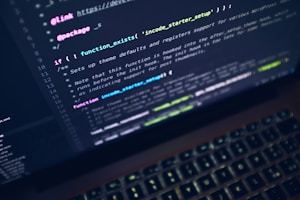Introducción
Windows 10 es uno de los sistemas operativos más populares de Microsoft, pero a veces puede sufrir problemas de rendimiento. Esta guía le proporcionará algunos consejos y trucos para optimizar su sistema Windows 10 y aumentar su rendimiento y eficiencia.
1. Limpia tu sistema
Con el tiempo, su sistema puede llenarse de archivos innecesarios, lo que puede ralentizar el rendimiento de su computadora. Utilice la herramienta de limpieza de disco integrada para limpiar archivos temporales, archivos del sistema y otros archivos innecesarios.
1. Press Win + S to open the Search menu.
2. Type "Disk Cleanup" and click on the corresponding result.
3. Select the drive you want to clean up (usually the C: drive) and click OK.
4. Check the boxes for the types of files you want to delete (eg temporary files, system files).
5. Click OK and then click Delete Files to confirm.2. Deshabilite los programas de inicio innecesarios
Los programas de inicio son aplicaciones que se inician automáticamente cuando enciende su computadora. Tener demasiados programas de inicio puede ralentizar el tiempo de arranque de su sistema. Para deshabilitar programas de inicio innecesarios:
1. Press Ctrl + Shift + Esc to open the Task Manager.
2. Click on the "Startup" tab.
3. Identify the programs you don't need to start automatically and right-click on them.
4. Choose "Disable" from the context menu.3. Optimice la configuración de energía
Windows 10 tiene varios modos de energía para equilibrar el rendimiento y la eficiencia energética. Para optimizar la configuración de energía:
1. Press Win + X and click on "Power Options."
2. Select the power plan that best suits your needs. "Balanced" is usually a good choice.
3. Click on "Change plan settings" for the selected power plan.
4. Adjust the settings for "Turn off the display" and "Put the computer to sleep" according to your preferences.
5. Click on "Change advanced power settings" to access more advanced options.
6. Adjust the individual power settings to optimize performance and energy efficiency.4. Actualizar controladores
Los controladores obsoletos o incompatibles pueden afectar negativamente el rendimiento de su sistema. Para actualizar sus controladores:
1. Press Win + X and click on "Device Manager."
2. Expand the categories and locate the device you want to update.
3. Right-click on the device and choose "Update driver."
4. Select "Search automatically for updated driver software" and let Windows search for the latest driver.
5. Follow the on-screen instructions to complete the driver update.5. Desactiva los efectos visuales innecesarios
Si bien los efectos visuales pueden hacer que Windows 10 se vea más atractivo, también pueden consumir recursos del sistema. Para deshabilitar efectos visuales innecesarios:
1. Open File Explorer and right-click on "This PC" (or "My Computer") and select "Properties."
2. Click on "Advanced system settings" in the left sidebar.
3. In the "Performance" section, click on "Settings."
4. In the "Visual Effects" tab, select "Adjust for best performance" or manually choose the effects you want to disable.
5. Click OK to save the changes.6. Deshabilitar servicios innecesarios
Windows 10 viene con muchos servicios que se ejecutan en segundo plano y consumen recursos del sistema. La desactivación de servicios innecesarios puede ayudar a mejorar el rendimiento. Sin embargo, es importante tener cuidado al deshabilitar servicios, ya que algunos pueden ser esenciales para su sistema.
1. Press Win + R to open the Run dialog box.
2. Type "services.msc" and press Enter to open the Services window.
3. Locate the service you want to disable, right-click on it, and select "Properties."
4. In the "Startup type" dropdown menu, select "Disabled" to prevent the service from starting automatically.
5. Click OK to save the changes.7. Usa un antivirus
El malware puede ralentizar significativamente su sistema y comprometer su seguridad. Instale un software antivirus confiable y realice escaneos regulares para mantener su sistema limpio.
8. Actualizar Windows
Microsoft publica regularmente actualizaciones para Windows 10 para corregir errores, mejorar el rendimiento y mejorar la seguridad. Asegúrese de que su sistema esté actualizado instalando las últimas actualizaciones de Windows.
1. Press Win + I to open the Settings app.
2. Click on "Update & Security."
3. Click on "Check for updates."
4. If updates are available, click on "Download and install" to install them.
5. Restart your computer if prompted.Conclusión
Siguiendo estos consejos y trucos, puede optimizar su sistema Windows 10 y mejorar su rendimiento y eficiencia. Realizar tareas de mantenimiento con regularidad y mantener su sistema actualizado ayudará a garantizar una experiencia informática fluida y eficiente.

